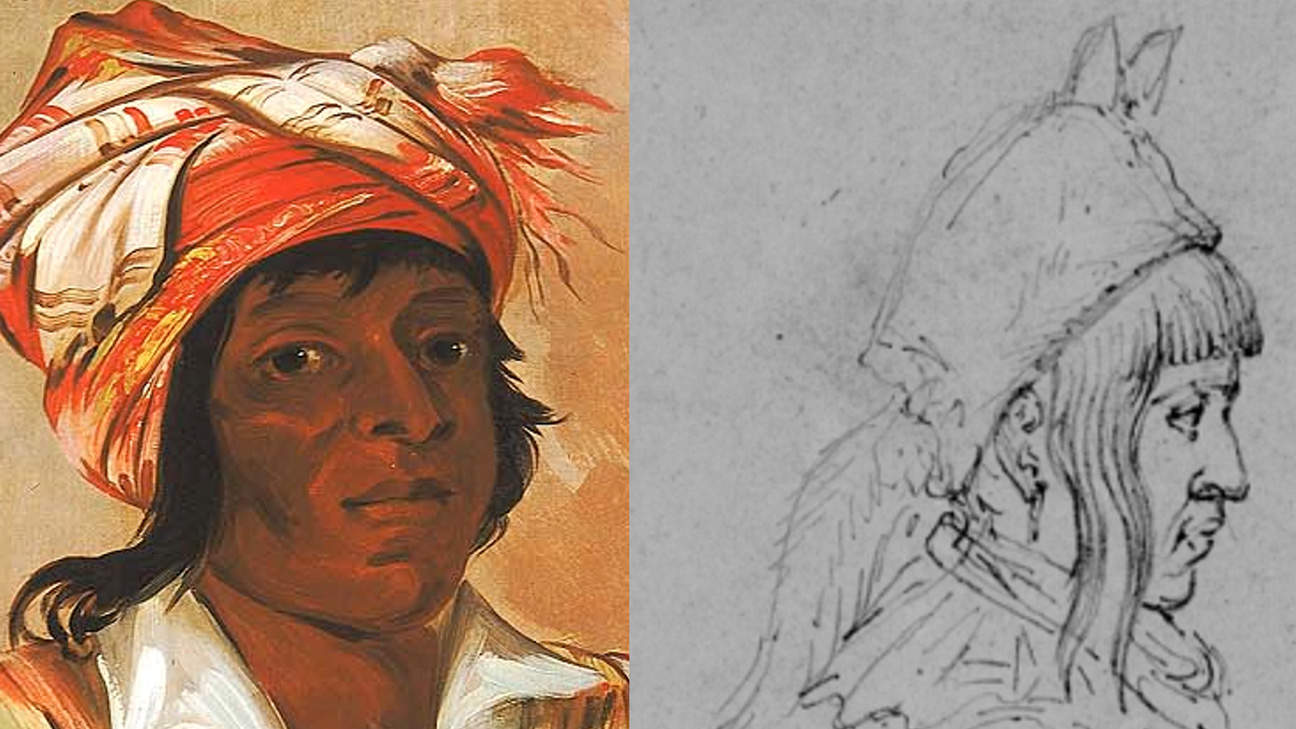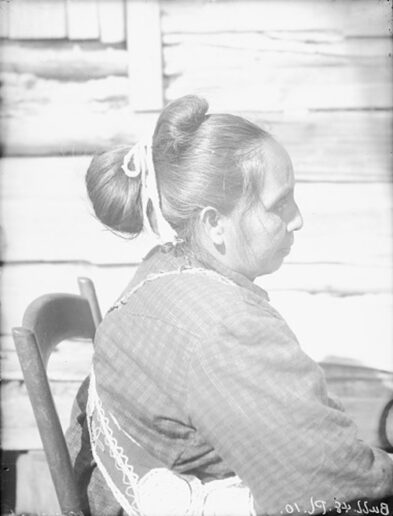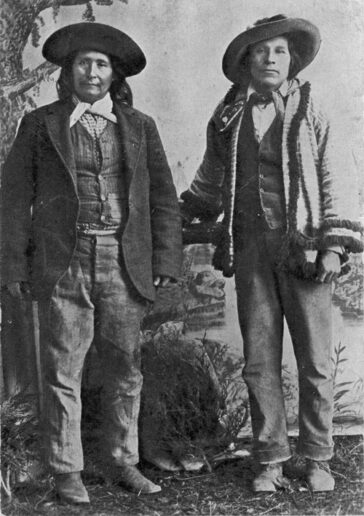 Left: Smithsonian American Art Museum/Right: Muséum d’histoire naturelle, Le Havre
Left: Smithsonian American Art Museum/Right: Muséum d’histoire naturelle, Le HavreLeft: Kút-tee-o-túb-bee, How Did He Kill?, a Noted Brave, 1834. George Catlin. Right: Annabé was sketched on April 6, 1830, in Memphis. Charles Alexandre Lesueur.
The Length of Our Story: History of Long Hair in Choctaw Culture
February 1, 2024
Under the Native American Graves Protection and Repatriation Act (NAGPRA) the Choctaw Nation has the authority to work with institutions around the United States for the respectful return of our ancestors and their funerary belongings.
This year, we were contacted by the Peabody Museum of Archaeology and Ethnology at Harvard University (PMAE) for a unique case – hair clippings of known Choctaw ancestors. During the early 1930s, hair clippings were collected from three Choctaw students at the Chilocco Indian Agricultural Boarding School located in Kay County, Oklahoma. They were later donated to the Peabody Museum in 1935. We were able to locate the students’ descendent families and ask them their wishes. Each family let us know that they would like to have these clippings returned to them.
This January, Chief Gary Batton welcomed the families, a Peabody Museum representative, and the Historic Preservation Department staff to a quiet repatriation at the Headquarters in Durant.
As a longstanding tradition, Choctaw people have worn their hair long for generations. The earliest European accounts from the Choctaw homeland (1540-1720) indicate that neighboring tribes called us Pashi Falaya, or the Long Hairs (Rangel 1993[1557]:296; Adair 1775:192).
Choctaw people were given this name because, while unusual among the other Southeastern tribes, it was common for Choctaw men to wear their hair long. Many men wore their hair to their shoulders with a longer lock of hair in front of their right ear. When traveling, this hairstyle aided in identifying the man as being Choctaw.
Choctaw people have adopted new hairstyles as our culture has changed through time. By the late 1700s, some Choctaw men had started wearing their hair shaved on the sides, with a longer part in the middle (Romans 1775:82).
It was common for Choctaw women to have their hair extend as far down as their calves; however, it was generally worn as a bun, see Figure 2.

<b>Figure 1</b>. Top Left: Kút-tee-o-túb-bee, How Did He Kill?, a Noted Brave, 1834. George Catlin. Smithsonian American Art Museum<br>Top Right: Annabé was sketched on April 6, 1830, in Memphis. Charles Alexandre Lesueur. Muséum d’histoire naturelle, Le Havre.<br>Bottom Left: Tshanny, A Choctaw Man, 1833. Karl Bodmer. Joslyn Art Museum.<br>Bottom Right: Sauvages Tchaktas Matachez en Guerriers qui portent des chevelures, 1735. Alexander de Batz. Peabody Museum of Archaeology & Ethnology.
Choctaw men and women used bear fat to oil their hair.
An old tradition for Choctaw men and women is shaving, cutting, or clipping a lock of hair when a loved one passes away (Halbert 1900: 365).
After the loved one passed, Choctaw women were known to wear their hair down throughout their mourning process (Ibid).
During the 18th and 19th centuries, paintings and drawings by European artists depicted Choctaw men and a few Choctaw women with long hair. Examples of this can be seen in Figure 1 and Figure 2.
The tradition of wearing long hair continued well after removal to Indian Territory in the 1860s and later.
Many pictures of Choctaw people in Oklahoma, Mississippi and Louisiana show Choctaws having long hair up into the 20th century.
Unfortunately, with the systematic deployment of boarding schools by the US Government, the tradition of long hair was taken, often without the consent of the family. The practice of cutting long hair upon entrance to boarding school was one of many tactics aimed to strip students of their own culture. In addition, some Choctaw people wanted to prove we could assimilate into American culture as “civilized” citizens capable of managing our own affairs. This assault on Choctaw identity would bring lasting consequences to our community.
Many Choctaw men and women today make a choice to wear their hair long. The association of the length and care we give to our hair was not lost in our community. Modern Choctaw people have led their communities on a journey of healing by embracing the sacredness of their own hair. Our hair carries our life story. We recognize that its length connects us to our ancestors through distant generations and its length is a reminder of our resilient spirit.
Adair, James. The History of the American Indians. United Kingdom, E. & C. Dilly, 1775.
Bushnell, David Ives. The Choctaw of Bayou Lacomb, St. Tammany Parish, Louisiana. United States, U.S. Government Printing Office, 1909.
Halbert, Henry S. Funeral Customs of the Mississippi Choctaw. Publications of the Mississippi Historical Society, Volume 3., edited by Franklin Lafayette Riley, United States, 1901.
Rangel, Rodrigo. The De Soto Chronicles: The Expedition of Hernando de Soto to North America in 1539-1543. United Kingdom, University of Alabama Press, 1993.
About Iti Fabvssa
Iti Fabvssa seeks to increase knowledge about the past, strengthen the Choctaw people and develop a more informed and culturally grounded understanding of where the Choctaw people are headed in the future.
Additional reading resources are available on the Choctaw Nation Cultural Service website. Follow along with this Iti Fabvssa series in print and online.
Inquiries
If you have questions or would like more information on the sources, please contact Ryan Spring at [email protected].



